Refresh and redefine your living space by implementing these invaluable decluttering strategies for a more organized and serene living room.
Tackling the task of decluttering your living room can be daunting, but with the right approach, it’s entirely achievable.
This article provides a step-by-step guide that will help you transform your living room from a cluttered mess into a serene and organized space. Whether you’re dealing with a mountain of old magazines, an array of mismatched décor, or a jumble of remote controls, you’ll find practical solutions here.
By following the strategies outlined in this article, you’ll not only declutter your living room, but you’ll also learn how to prevent clutter from accumulating in the future.
Dive right in to discover the detailed advice that will make your decluttering journey a breeze.
Identify Clutter Areas
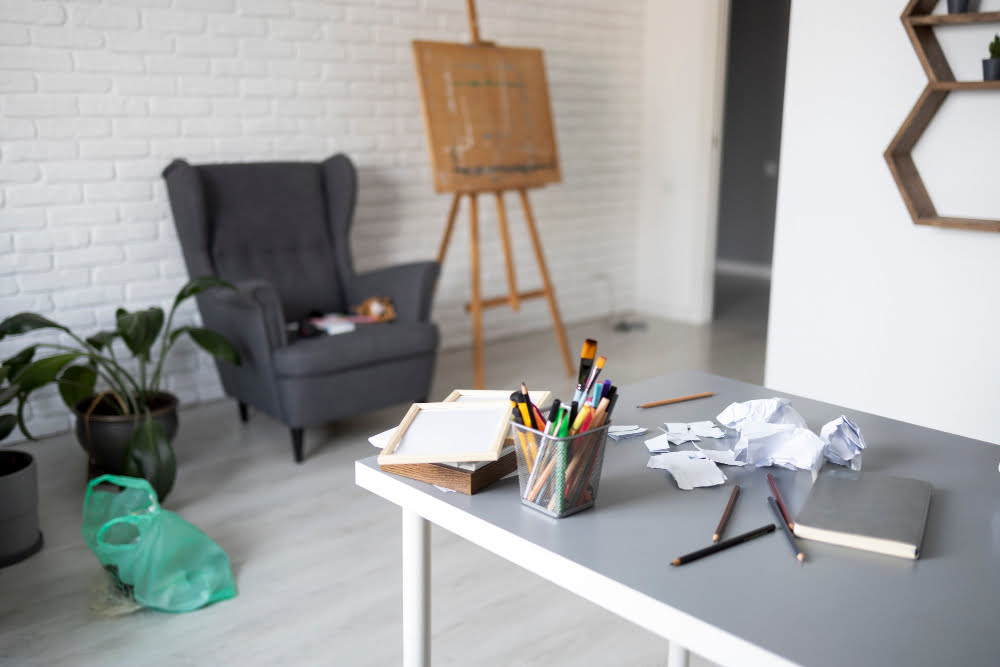
To start, divide your living room into segments: the entertainment stand, coffee table, side tables, bookshelves, sofa, and any storage units.
Consider each area independently and note where unnecessary items seem to accumulate.
An overcrowded bookshelf or a coffee table that has become a catch-all surface might be some of your biggest offenders.
By breaking down the room this way, the task becomes more manageable and each successfully decluttered area will motivate you to continue to the next one.
Rules for a Clutter-Free Space
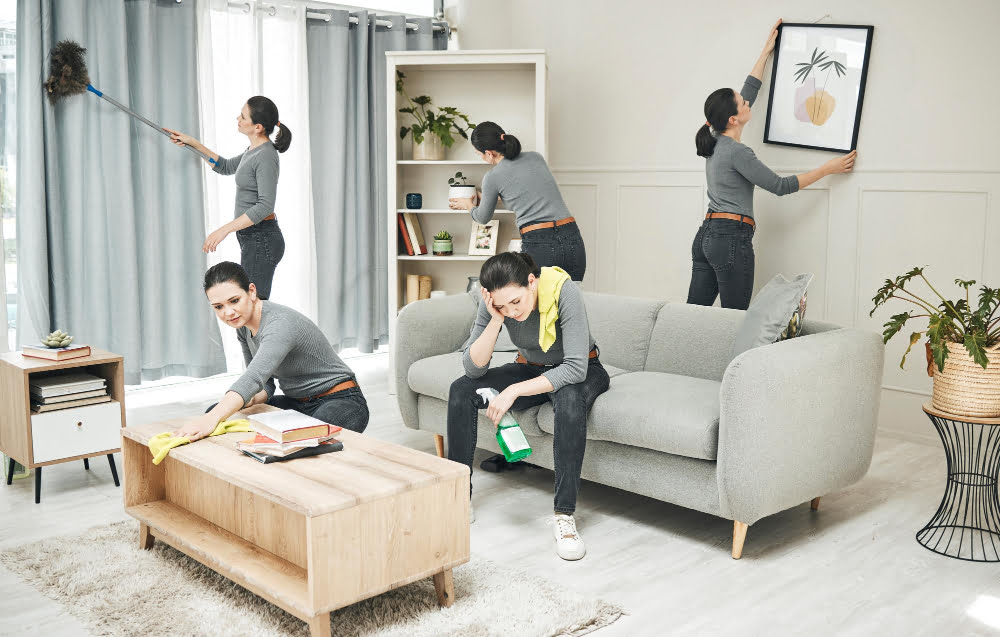
Begin by establishing a ‘one in, one out‘ philosophy. When a new item enters the space, an old one should leave. This technique allows for a balanced quantity of items in the room and effectively combats the accumulation of clutter.
Secondly, ensure that every item in your living room has a designated place. This eliminates the likelihood of objects being left out of place and contributing to a disordered aesthetic.
Implement a regular decluttering schedule, perhaps on a weekly or monthly basis, depending on your needs. This helps to manage clutter build-up and maintain an organized environment.
Best Decluttering Techniques
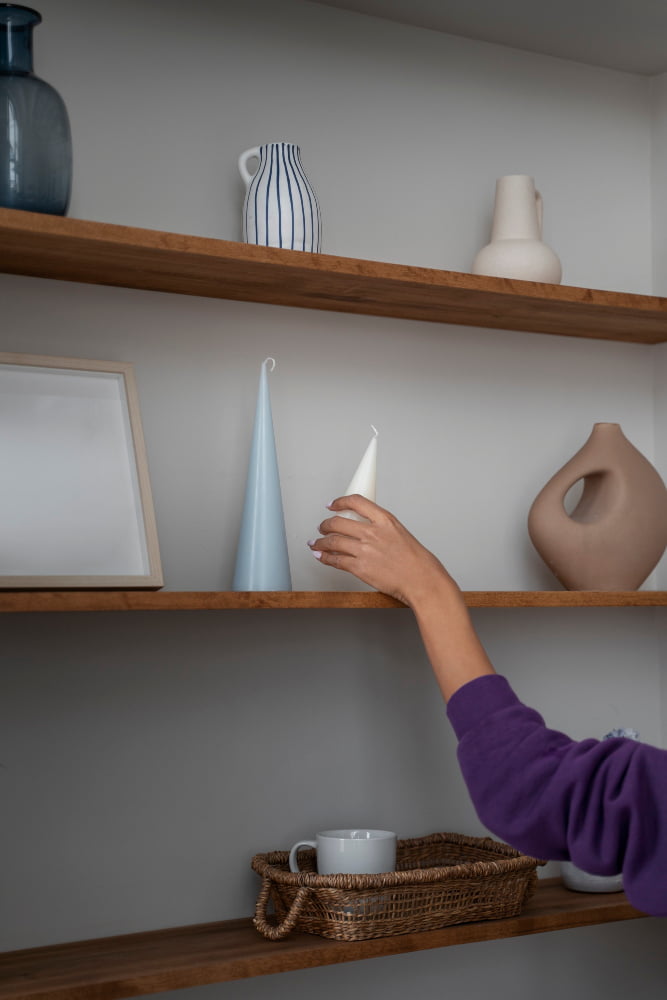
Begin with a thorough evaluation of each item in your living room. If it hasn’t been used, appreciated, or noticed in a year, it’s probably safe to remove it. Use the “One-In, One-Out” rule: for every new item brought in, an old item must go. This prevents the accumulation of unnecessary things.
Sorting items into ‘donate’, ‘trash’, and ‘keep‘ piles can make this process more efficient. Don’t allow yourself to ponder over individual items for too long; aim for quick decision-making to keep the momentum going. In cases of sentimental items, consider taking a picture for memory’s sake, then part with the item itself.
For those items in the ‘keep’ pile, categorize them according to their use to enhance organization. Regularly used items should be easy to reach, while less frequently used items can be stored away. Use storage solutions like baskets, boxes, and drawers to keep things tidy. Just ensure that these storage solutions don’t contribute to more clutter. Remember, your goal is to free up space, not just to hide items out of sight.
Tackle Paper Clutter

Make it a rule to deal with mail as it arrives rather than letting it pile up.
Online bills and notifications can significantly reduce paper clutter, so consider making the digital switch.
For necessary receipts, consider an organizational system like an accordion file or a designated drawer.
Old magazines and newspapers should be recycled or donated regularly to avoid pile-up.
For important documents that need to be stored longer-term, invest in some form of file storage to keep them sorted and out of sight.
A regular weekly paper purge limits accumulation and keeps your living room clutter-free.
Organization of Shelves and Cabinets
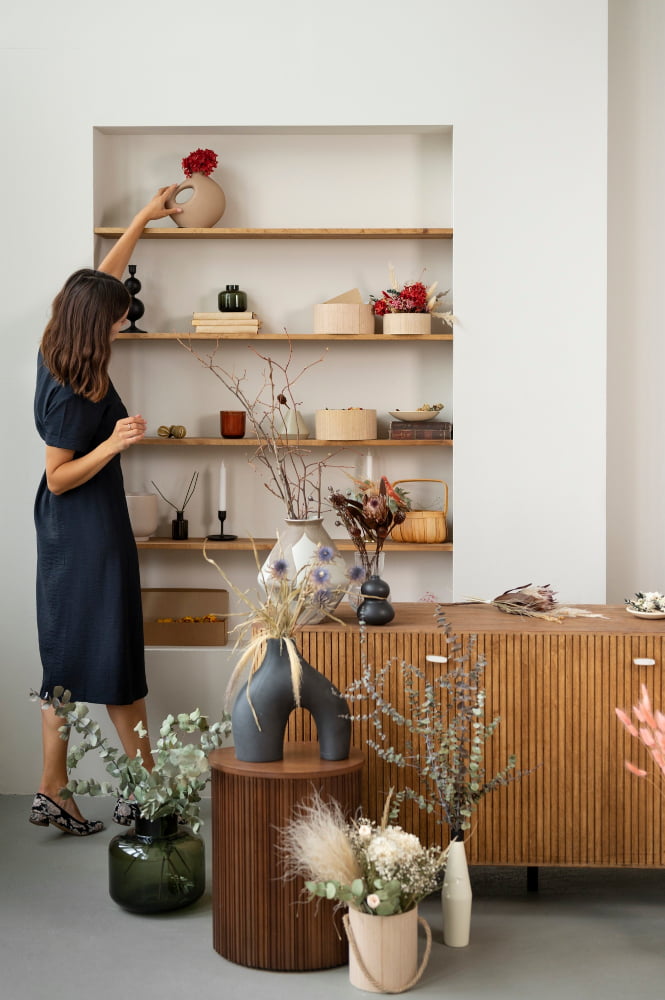
Begin by emptying all shelves and cabinets; a clear visual of space available helps in realistic planning.
Categorize items into groups such as books, décor, and multimedia.
Consider the size, shape, and frequency of use when assigning each item a place.
Aim to keep most-used items at eye level and less-used items on either lower or higher shelves.
For cabinets, use organizing tools like baskets, boxes or shelf dividers.
Ensure all like items are kept together.
When arranging books, try grouping them by size or genre for visual harmony and ease of access.
Remember to leave some empty space for a less cluttered look.
Clearing Out Unused Entertainment Devices
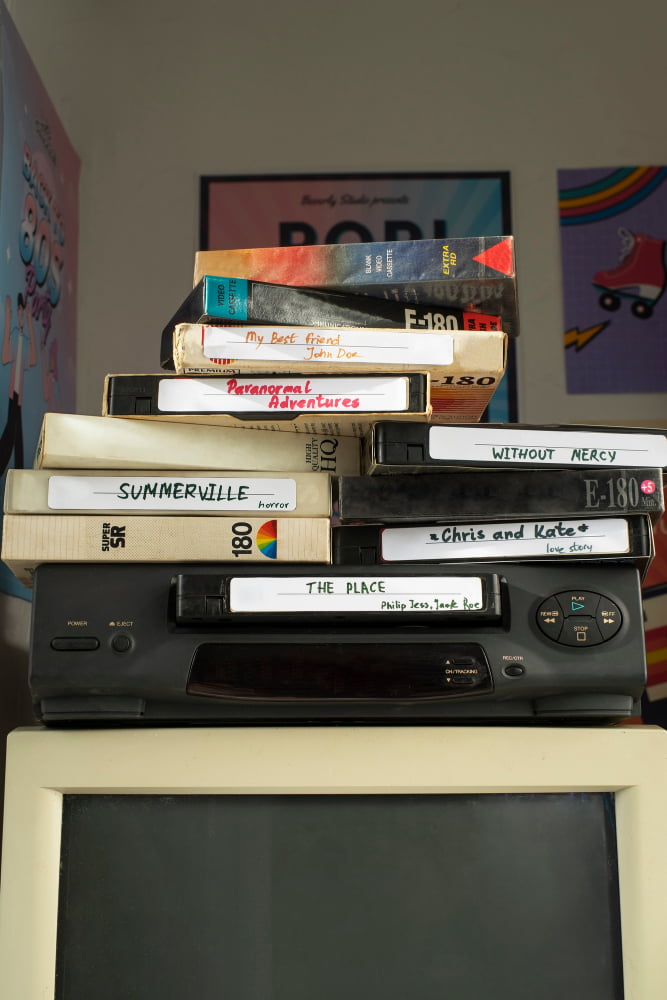
Start by gathering all remote controls, gaming consoles, DVD players, and other devices. Consider which ones you frequently use and which have been collecting dust. If a device hasn’t been used in the past six months to a year, it’s time to reassess its utility.
In today’s age of streaming services and multi-functional devices, you might find that some electronics are redundant. For example, if you use your game console to stream movies, you may not need a separate DVD player.
Unwanted devices in working order can be sold online or donated to a local charity. Recycle broken electronics responsibly by dropping them at appropriate facilities or participating in electronics recycling programs.
Finally, organize the remaining devices with useful tools. A universal remote can replace multiple controllers, while cord organizers can keep those unruly cables in check. Storing these items neatly when not in use will make your living room look more organized and far less cluttered.
Managing Knick-Knacks and Ornaments
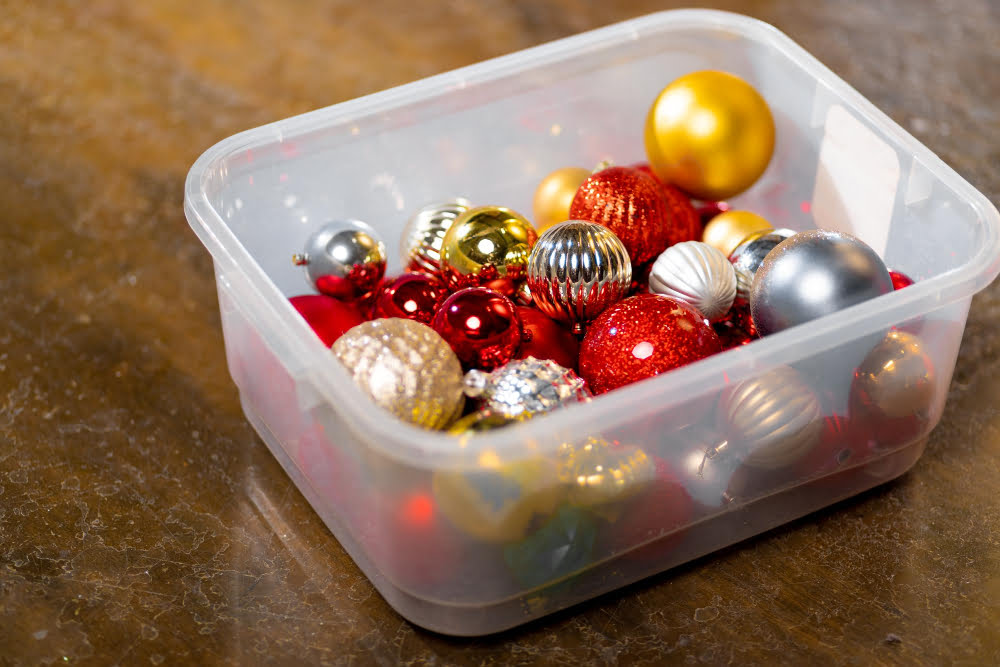
Begin with grouping similar items together – seashells with seashells, figurines with figurines, and so forth. Not only does this make your collection look more neatly arranged, it also highlights the unique qualities of each piece.
Next, review your collection, item by item. Get rid of knick-knacks that no longer resonate with you or fit the style of your room. For precious keepsakes that aren’t quite on par with your décor but hold sentimental value, consider dedicating a special space like a memory box stored carefully away.
Invest in stylish organizers or display stands to showcase key pieces, while maintaining a balanced aesthetic. Rotate exhibits seasonally to keep the look fresh without overfilling your space. Remember, the key is to showcase your treasures without overwhelming your living room.
Handling Damaged Furniture and Rugs

Assess each piece carefully. If it’s beyond repair or does not serve a purpose, then it’s time to let it go.
Damaged furniture not only clutters your space but also detracts from the overall aesthetics. Contribute to a green environment by repurposing, upcycling, or responsibly disposing of old items.
For damaged rugs, consider professional restoration services. If that’s beyond your budget, donating or recycling are your best alternatives.
Despite the emotional attachments to various items, remember the end goal – a clutter-free, organized living room. This process can significantly enhance the look and feel of your space, rendering it more inviting and relaxing.
Furniture Rearrangement Tips
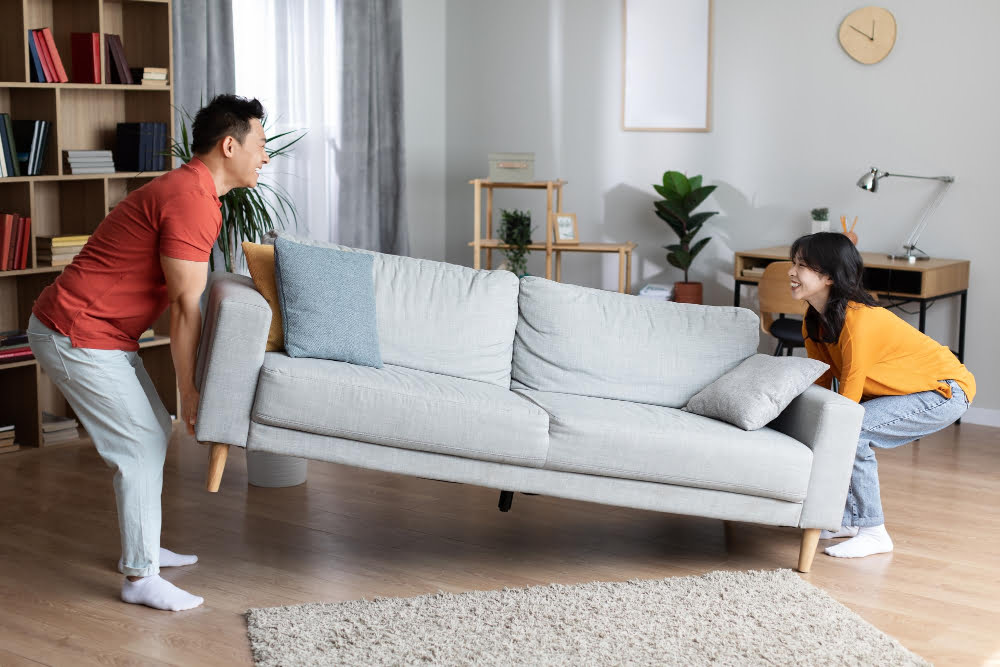
Streamlining your furniture arrangement can significantly enhance the flow and aesthetic appeal of your living room.
Start by pinpointing an anchor, such as a fireplace or a large window, and arrange your furniture to complement this feature.
Consider traffic patterns and maintain clear walkways to ensure the room can be navigated with ease.
An effective strategy is to group furniture based on functionality, like reading or conversation areas.
Larger pieces such as bookcases or consoles should ideally be pushed against the wall to maximize the central space.
Consider the function, size, and style of each piece, and don’t hesitate to remove items that don’t enhance the room’s look or usage.
This rearrangement might seem like a daunting task, but the outcome of more space and a clearer room is more than worth it!
Maintaining a Clutter-Free Living Room
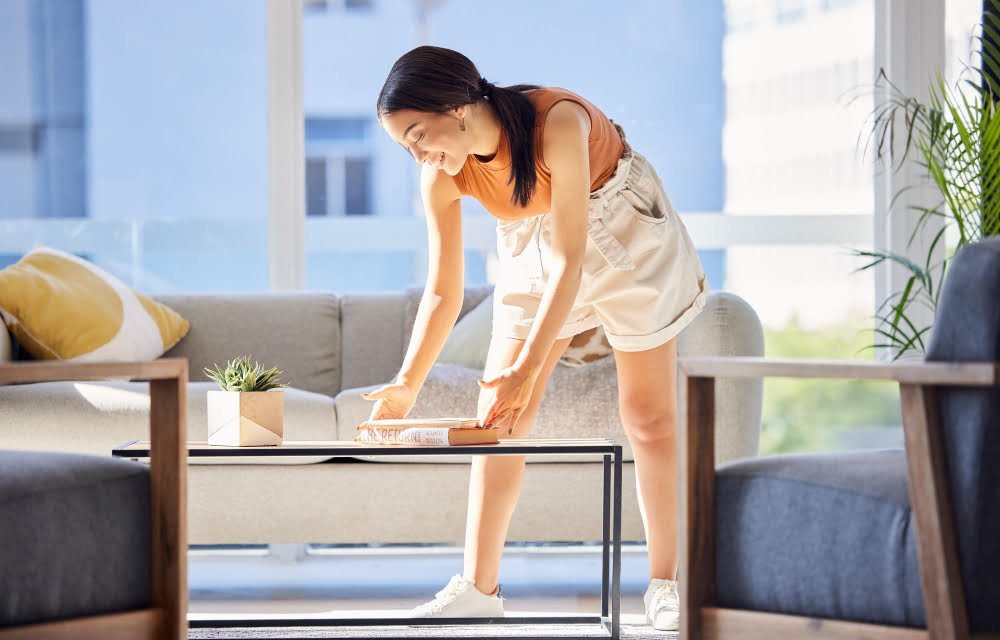
Establishing a regular cleaning schedule is key.
Taking a few moments each day to straighten cushions, arrange books, and remove any unused items can prevent clutter from accumulating.
Another effective strategy is the ‘one in, one out’ rule.
This means, for every new item brought into the living room, an old one is either discarded or donated.
Also, ensure everyone in the household shares the responsibility to keep the living room tidy.
With this consistency, your living room will remain clutter-free, inviting, and organized, reflecting serenity and peace.
FAQ
What is the 20 rule decluttering?
The 20/20 decluttering rule posits that an item should be discarded if it can be replaced for less than $20 and within less than 20 minutes.
What makes a living room look cluttered?
A living room will appear cluttered if it contains too much furniture for its size, or if the scale of the furniture is not proportionate to the room, prompting the need for additional pieces to balance the space.
How can one implement the Five Box Method for Living Room decluttering?
To implement the Five Box Method for living room decluttering, one needs to categorize items into five boxes labeled as: ‘Keep’, ‘Relocate’, ‘Sell or Donate’, ‘Storage’, and ‘Trash’.
How do color schemes and furniture placement affect a room’s perceived level of clutter?
Color schemes and furniture placement significantly impact a room’s perceived level of clutter, as light, monochromatic color palettes and strategic furniture arrangement can create an illusion of spaciousness and order.
How often should one declutter their living room to maintain a tidy space?
One should aim to declutter their living room at least once a week to maintain a neat and orderly space.
Related Stories
- How Long Does It Take to Declutter a House?
- How to Declutter a Room: Simple Steps for a Tidier Space
- How to Declutter: A Comprehensive Guide for a Clutter-Free Home
- Easy Steps on How to Declutter Your Apartment – Ultimate Guide
- Home Organization Ideas: Creating a Beautiful and Functional Living Space